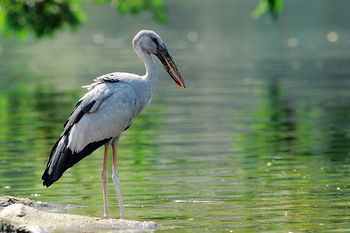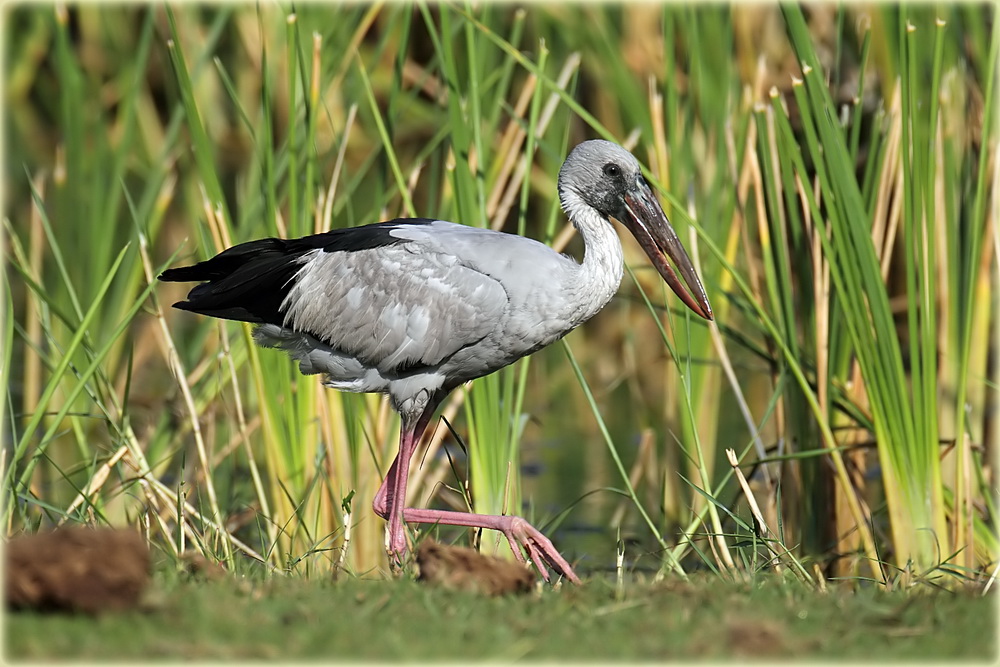
Anastomus oscitans
SUBFAMILY
Tribe Mycteriini
TAXONOMY
Ardea oscitans Boddaert, 1783, Pondicherry. Monotypic.
OTHER COMMON NAMES
English: White openbill; French: Bec-ouvert Indien; German:
Silberklaffschnabel; Spanish: Picotenaza Asiбtico.
PHYSICAL CHARACTERISTICS
Length 31 in (81 cm), wingspan 58–59 in (147–149 cm). Small
pale gray or white stork with black wings and black forked tail.
Distinctive “open” bill formed by lower mandible curving
down, then back, to meet upper mandible at tip.
DISTRIBUTION
India, Indochina.
HABITAT
Shallow marshes and flooded fields.
BEHAVIOR
Social. In flight soars on thermals, then glides to destination.
Call a mournful “hoo-hoo.”
FEEDING ECOLOGY AND DIET
Mainly apple snails and occasionally other small aquatic animals.
Prey located by touch and sight. Snails extracted from
shells using sharply pointed lower mandible.
REPRODUCTIVE BIOLOGY
Highly social, nests in large tree colonies with other waterbirds
such as herons. Clutch size two to five eggs, incubation 27–30
days, fledging 35–36 days.
CONSERVATION STATUS
Not threatened. The most common Asian stork.
SIGNIFICANCE TO HUMANS
Generally well regarded. Specially protected in Thailand,
where colonies are located in the grounds of Buddhist monasteries.
Photo Gallery of - Asian openbill




 Animalia Life
Animalia Life